Testing, Testing, 1,2,3!
By Prof Lynnath Beckley
The RV Investigator departed Fremantle yesterday afternoon after loading equipment and supplies for our month-long voyage as part of the second International Indian Ocean Expedition. Everyone is finding their sea legs and adapting to the 24/7, 12 hours on and 12 hours off watch system. Today, as we traverse the 1000 km towards our first station on 110°E, we stopped to do some equipment testing and personnel training so that everyone could become familiar with the equipment, procedures and safety involved with oceanographic sampling.
We are currently about 120 km west of Cape Leeuwin, one of the world’s “Great Capes”. Remarkably, at Cape Leeuwin there is a plaque commemorating the fact that on 6th December 1801, Captain Mathew Flinders, Commander of HMAS Investigator, sighted Cape Leeuwin and started mapping the Australian coast. Now, on the modern 93m RV Investigator, we are on our way to map the south-east Indian Ocean repeating an oceanographic voyage conducted way back in May and June 1963 by the HMAS Diamantina as part of the first International Indian Ocean Expedition.
The present-day inscription at Cape Leeuwin dedicated to Captain Matthew Flinders, RN whom sighted Cape Leeuwin and commenced mapping of the Australian coast on 6 December 1801. Photo: Prof Lynnath Beckley.
“Lights, sound, camera, action” could well have been the call today as we started our testing. Prof David Antoine’s optics team from Curtin University got their many instruments designed to examine light in the ocean up and running. Likewise, using sonobuoys, Curt and Micheline Jenner are already busy monitoring sound from whales as part of their ongoing work for the Australian Department of Defence. Micheline is also our resident photographer and has been busy with her brace of cameras documenting the activities of our 40 scientists and technicians.
Charlotte Robinson from Curtin University, part of David Antoine’s optics team holds a critical piece of their equipment. Photo: Micheline Jenner.
We also tested the CTD rosette which is an important and unique piece of equipment for all the researchers as we document the physical, chemical and biological properties of the water column. When it is brought back on board, it has over 400 L of water sampled from a range of depths in the ocean from which we can examine nutrients, microbes, genetics, pigments and get water to run a range of experiments such as primary production, nitrogen uptake and grazing by micro-zooplankton. The zooplankton team were also busy testing their extensive arsenal of nets of various configurations and mesh sizes so that they can examine the poorly understood pelagic south-east Indian Ocean food web from tiny phytoplankton through to deep sea lantern fishes.
Curt Jenner deploying the first sonobuoy of the IN2019_V03 voyage to monitor the evening fish chorus. Photo: Micheline Jenner.
Micheline Jenner is ready, willing and able to capture the activities of the 40-member scientific team as well as any whales, dolphins and seabirds that stray within the ship’s field of view. Photo: Curt Jenner.
This research is supported by a grant of sea time on RV Investigator from the CSIRO Marine National Facility.
Be sure to follow the daily posts of our One Ten East Logs from the IN2019_V03 aboard RV Investigator at https://iioe-2.incois.gov.in and https://wamsi.org.au as well as www.cwr.org.au .

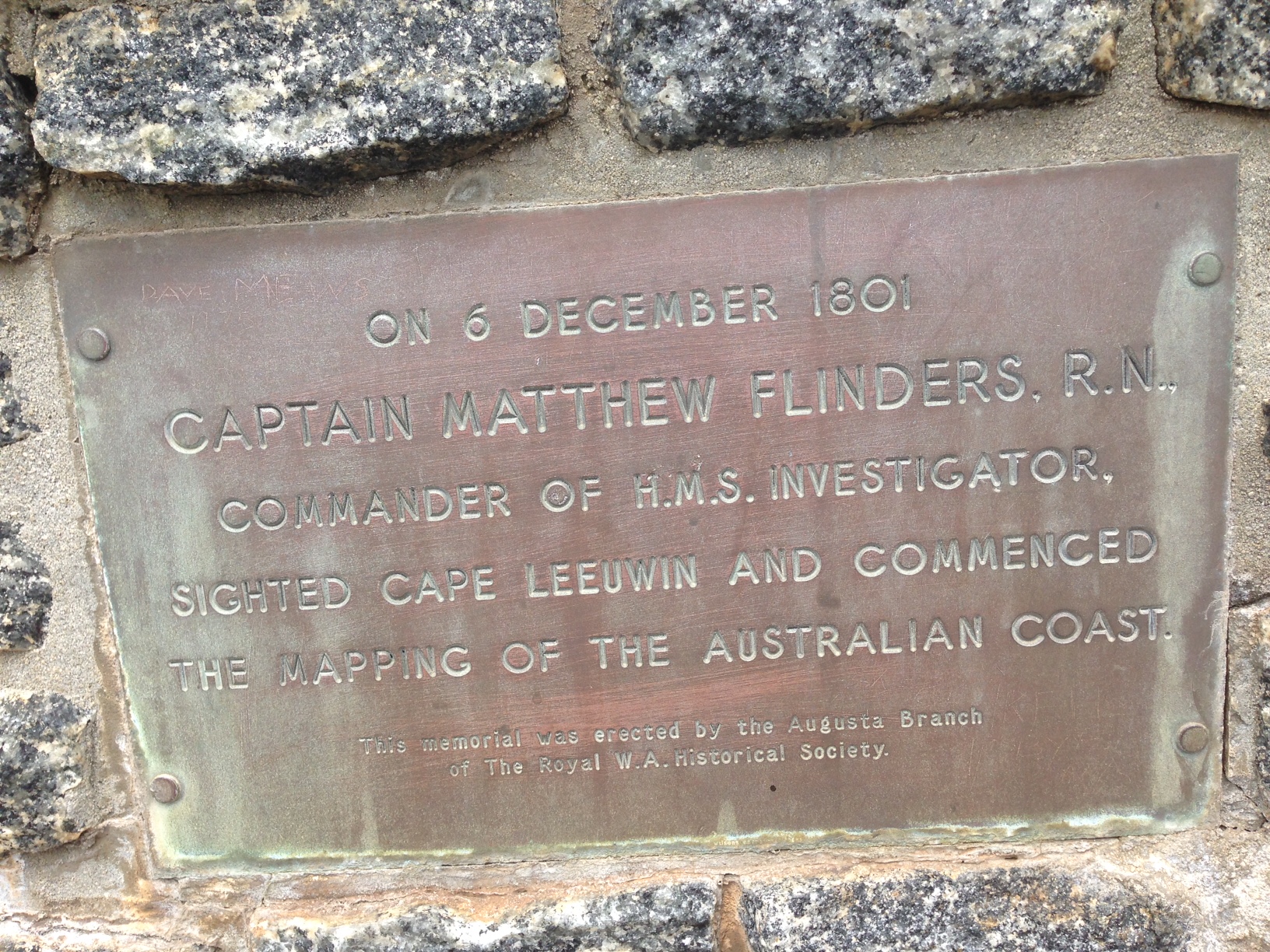
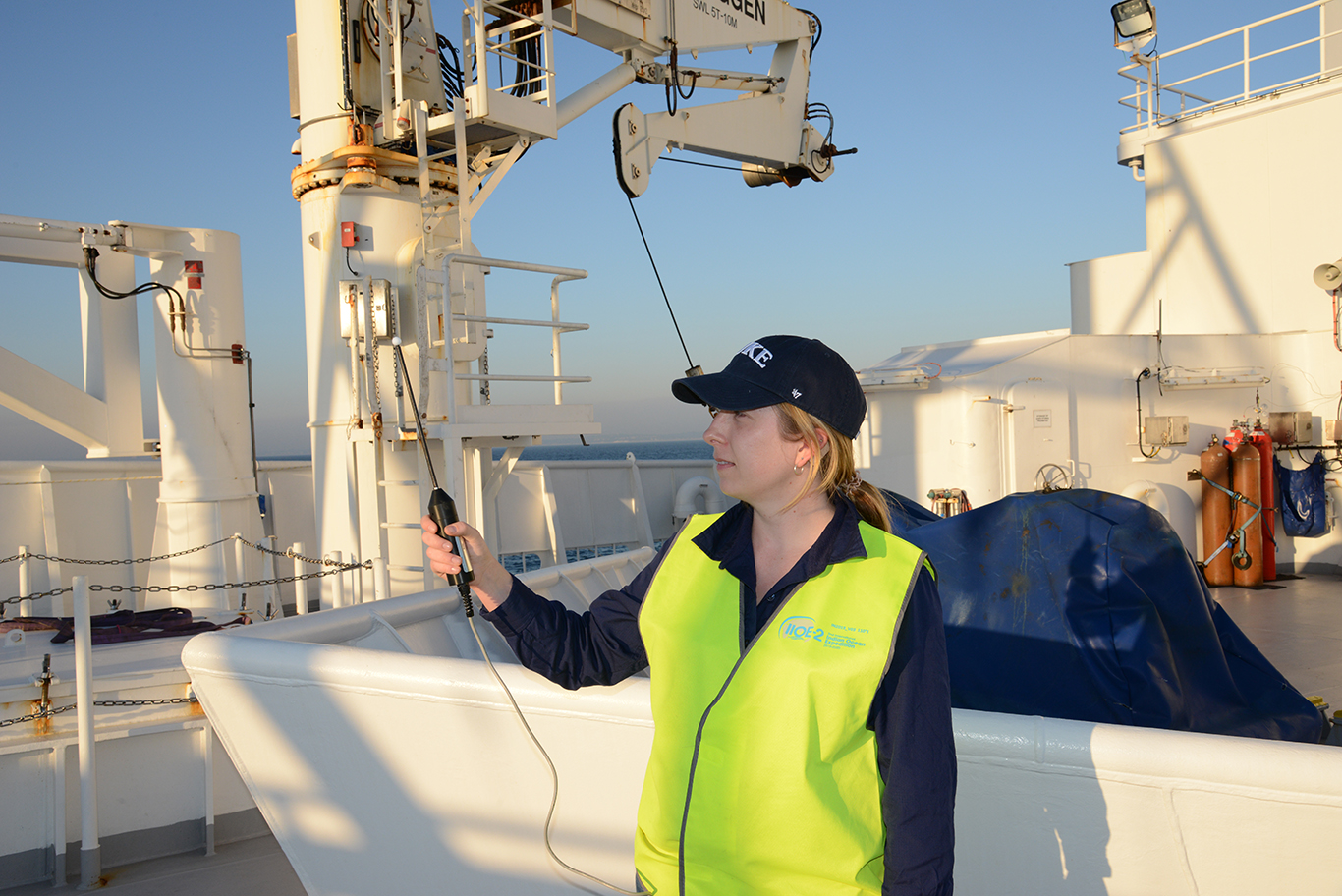
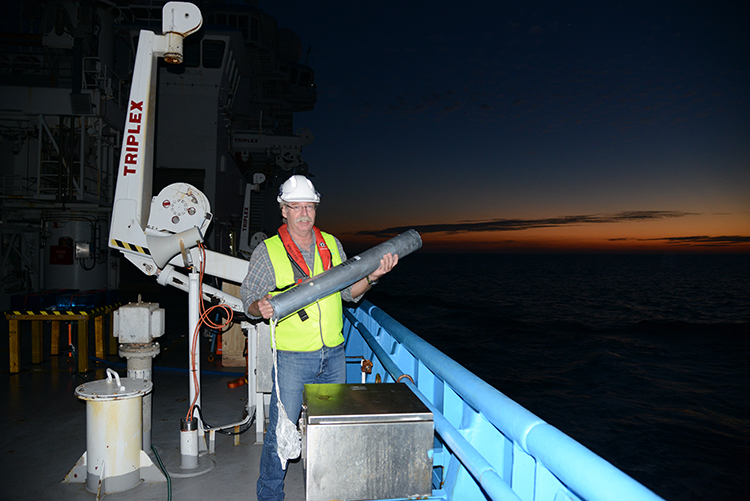
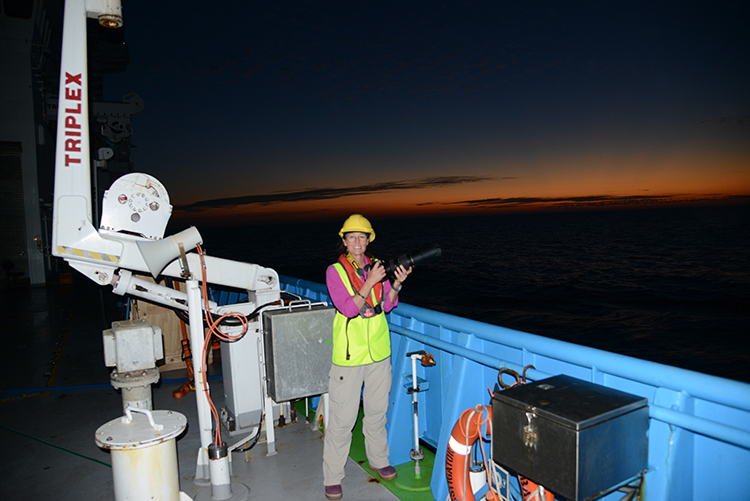



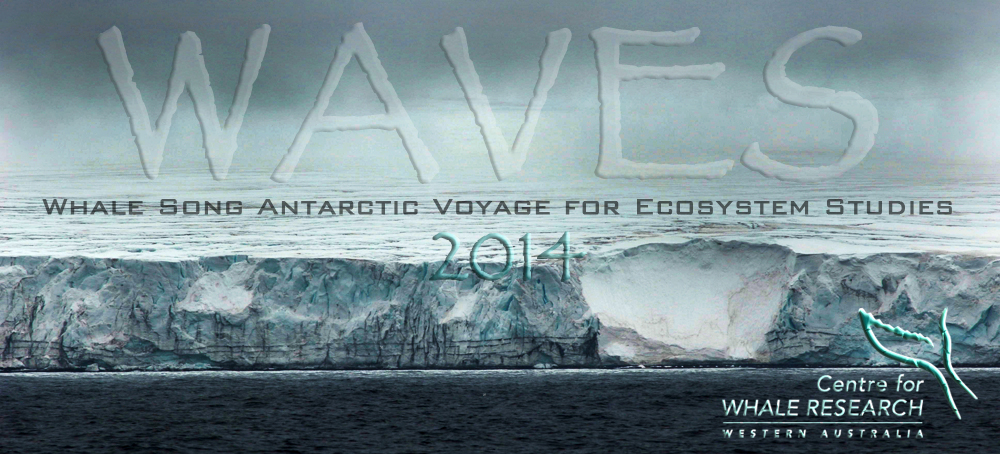










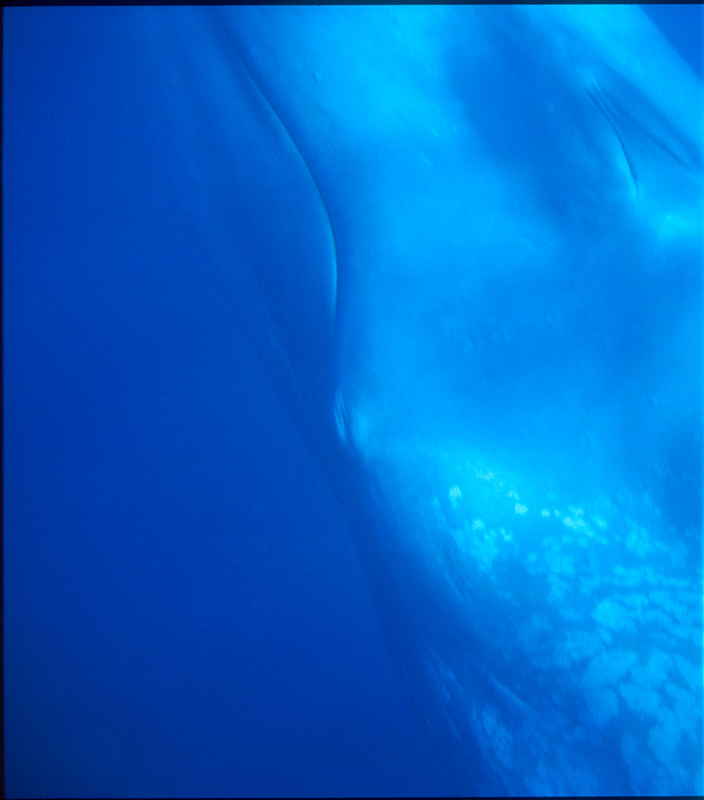
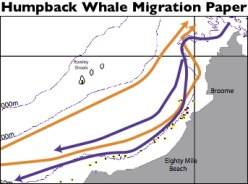
No comments yet.